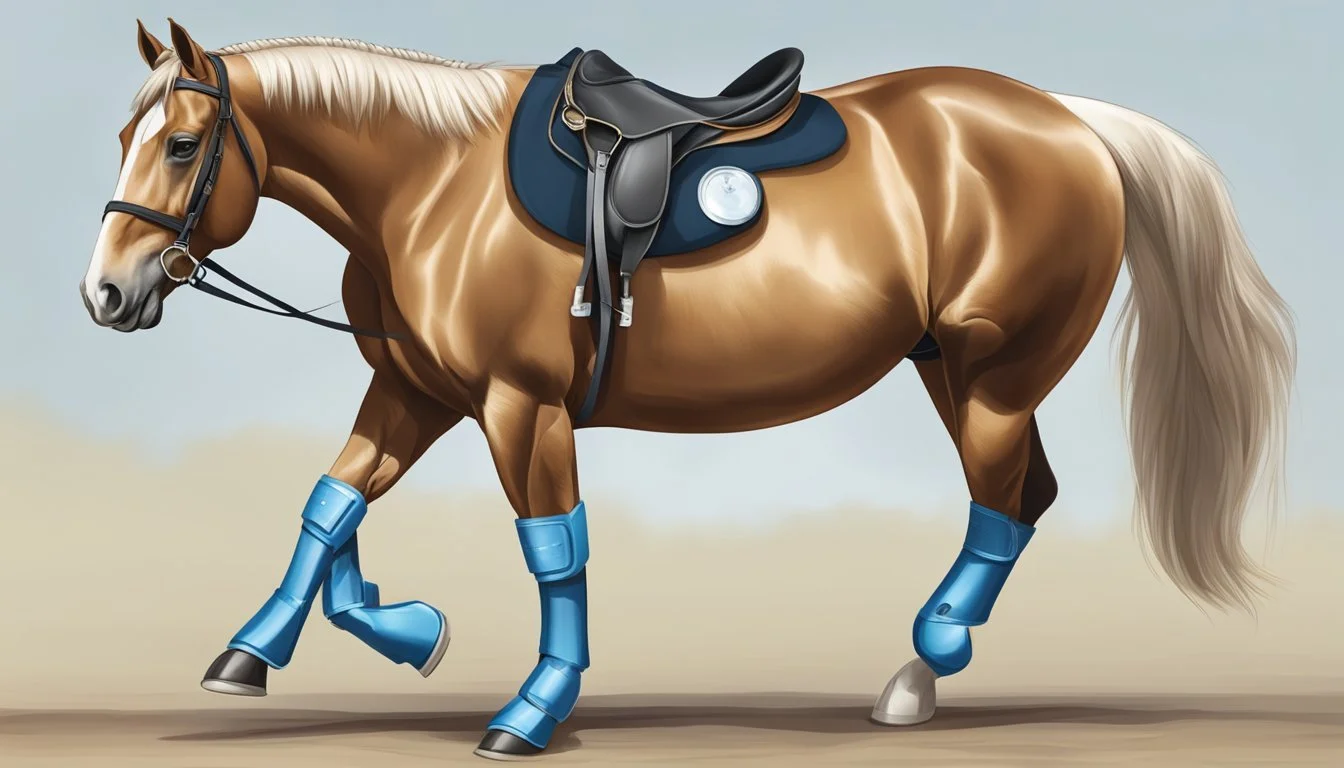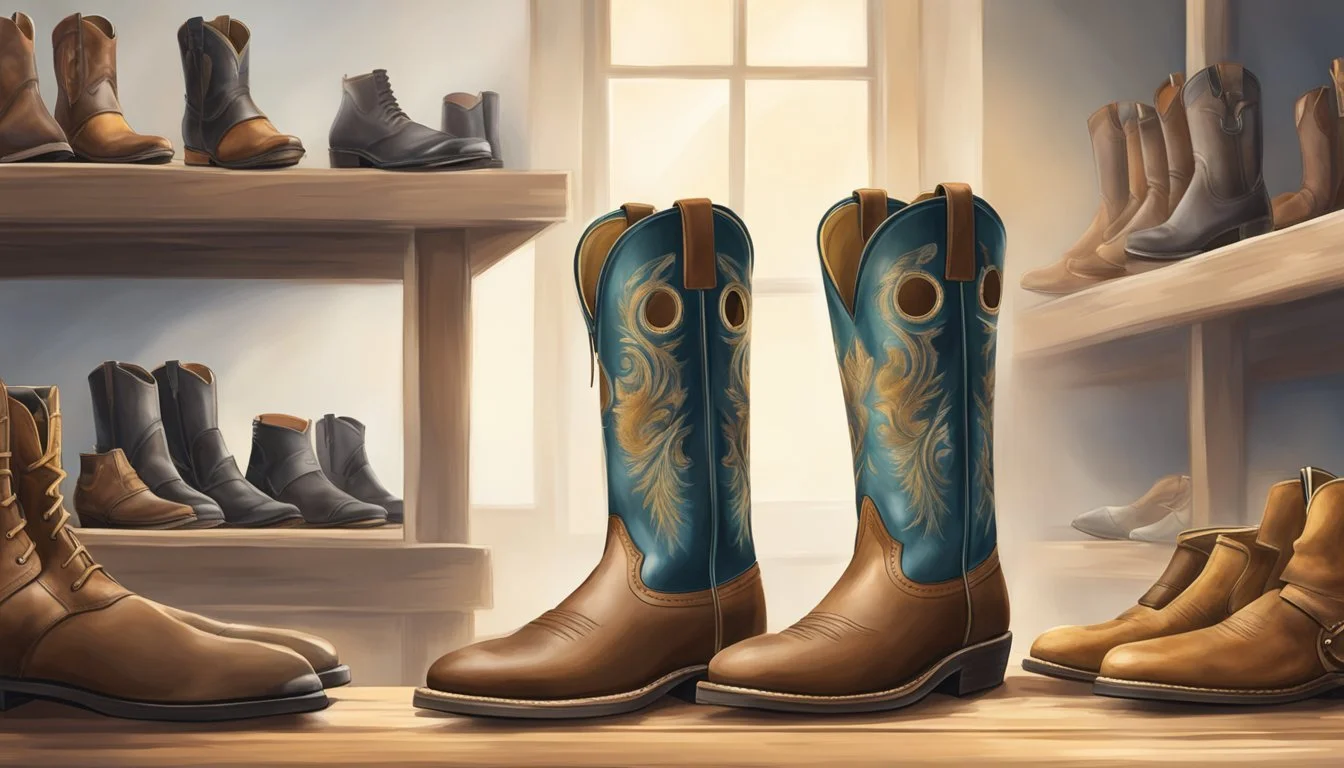The Ultimate Guide to Using Livestock Hoof Boots
Ensuring Recovery for Injured Hooves
Livestock hoof boots are an invaluable tool for the protection, comfort, and healing of injured hooves. They serve as a vital aid in equine and cattle hoof care management, particularly when an animal is recovering from a hoof injury. These boots are designed to offer a snug fit, mimicking the natural conditions of unshod hooves walking on soft, natural ground. By providing a controlled environment, hoof boots can help in the healing process by alleviating pressure, ensuring cleanliness, and maintaining a stable position for the damaged hoof.
Selecting the right hoof boot is crucial — a good fit ensures the boot remains secure without causing additional discomfort to the animal. The boots come equipped with soft straps that enable an adjustable and firm hold around the pastern, minimizing the risk of movement that could impede recovery. Carefully putting the boot on, similar to how a farrier would handle the hoof, helps the animal adapt to its temporary footwear.
Using hoof boots for healing not only safeguards against debris and contaminants but also ensures the animal’s weight is evenly distributed. This prevents further strain on the affected area. Veterinarians often recommend hoof boots for animals with traumatic hoof injuries, as they can accommodate bandages or other treatments and can be easily removed for wound assessment and care. For livestock owners and caregivers, understanding the proper utilization of hoof boots is a step towards ensuring the swift and safe recovery of their animals’ hoof health.
Understanding Hoof Anatomy and Common Ailments
Proper hoof care is critical to a livestock's mobility and overall health. Understanding hoof anatomy and common ailments can greatly assist in preventing and treating hoof issues effectively.
Hoof Structure Breakdown
The hoof of livestock is a complex structure designed to absorb shock, bear weight, and provide traction. It primarily consists of:
Hoof Wall: The hard outer surface, which is comparable to human fingernails.
Sole: The underside of the hoof, which should not come into contact with the ground in healthy animals.
Frog: A V-shaped structure that aids in shock absorption and blood circulation.
Coronary Band: The area just above the hoof wall where hoof growth originates.
Internal Structures: Includes the pedal bone, digital cushion, and sensitive laminae.
Identifying and Diagnosing Hoof Problems
Common hoof problems in livestock include:
Laminitis: Inflammation of the sensitive laminae; can cause rotation of the pedal bone.
Abscesses: Pockets of infection within the hoof, often seen as a black spot on the sole or a hot and swollen leg.
Cracks: Vertical fissures in the hoof wall that can lead to lameness if left untreated.
Thrush: A bacterial infection of the frog, characterized by a foul smell and black discharge.
Navicular Syndrome: Degeneration around the navicular bone, more common in horses.
To diagnose these ailments, look for signs like lameness, heat in the hooves, visible cracks, or changes in gait.
The Role of Nutrition and Environment
Hoof health is influenced by:
Diet: A balanced diet rich in biotin, amino acids, and essential minerals supports strong hoof growth.
Forage and hay should form the basis of the diet, with the addition of supplements as necessary.
Environment: Clean, dry environments help prevent infections and maintain hoof integrity.
Regular cleaning to remove manure and damp bedding can minimize the chance of bacterial or fungal growth.
By understanding hoof anatomy and the factors affecting hoof health, livestock owners can take proactive steps to mitigate hoof ailments and ensure their animals remain healthy and mobile.
The Importance of Regular Hoof Maintenance
Regular hoof maintenance is crucial for promoting healthy hoof growth and preventing injuries. A consistent care routine includes scheduled farrier visits for trimming and employing proper cleaning techniques to maintain the integrity and health of livestock hooves.
Routine Farrier Visits and Trimming
Scheduled farrier visits are essential in ensuring that hooves are properly maintained and trimmed. Routine trimming helps avoid overgrowth that can lead to uneven weight distribution and stress on the animal's limbs. As hooves grow, they can develop cracks or deformities which, if not addressed, could hinder the animal's ability to move and exercise effectively, potentially leading to more serious health issues.
Frequency of Trimming: Generally, livestock hooves should be trimmed every 6 to 8 weeks; however, the specific interval may vary depending on the species and individual growth rates.
Key Aspects of Trimming:
Removal of excess hoof to promote even weight bearing
Ensuring the hoof is level, avoiding stress points
Checking for signs of diseases and treating as necessary
Farrier visits and the expertise they bring are integral to hoof care, as they are trained to handle the intricacies of hoof trimming and maintaining a clean, healthy hoof structure.
Proper Cleaning and Care Techniques
Effective hoof care extends beyond the farrier's responsibilities. Regular cleaning is necessary to maintain a healthy hoof environment, preventing infections and diseases that hamper healing and proper hoof function.
Daily hoof care routine should include the following steps:
Use a hoof pick to remove debris and manure from the hoof's sole, frog, and clefts.
Inspect hooves for signs of injury, infection, or foreign objects.
Wash and dry hooves thoroughly if conditions are excessively wet and muddy to prevent thrush and other bacterial infections.
A clean environment and good ventilation are pivotal for hoof health. Livestock should have access to dry bedding and clean stalls, which helps to keep hooves dry and prevents the softening of the hoof, which can make them more susceptible to injury. Regular exercise and movement are also significant for promoting circulation and hoof health, ensuring the animal's hooves are robust and functional.
Selecting the Right Hoof Boot for Healing
When dealing with an injured hoof, selecting the right hoof boot is critical for promoting healing while offering protection and comfort. The following subsections will provide specifics on the types and purposes of hoof boots, how to ensure proper fit and sizing, and a comparison between barefoot recovery and shod healing methodologies.
Types and Purposes of Hoof Boots
There is a range of hoof boots designed for different therapeutic and protective needs. Therapy boots, such as the EasyCare Easyboot Cloud, are crafted specifically for horses with chronic conditions or those recovering from surgery, offering extra cushioning and support. Alternatively, flexible boots like the Scoot Boot allow for more natural hoof movement and are suitable for less intensive care. Cavallo boots are known for their versatility, fitting a variety of hoof shapes, making them a good all-around choice for both protection and recovery.
Protection Boots: Shield injured hooves from further damage.
Therapy Boots: Provide support and cushioning for healing.
Flexibility-Focused Boots: Encourage natural hoof movement during recovery.
Assessing Fit and Sizing
A properly fitted hoof boot is imperative for successful healing. An ill-fitting boot can cause more harm than good, leading to rubs, irritation, or even injury progression. For sizing, measure the hoof's width and length immediately after a trim to ensure accuracy. Most manufacturers, such as EasyCare and Cavallo, provide detailed size charts. Hooves that are more oval-shaped may require boots with a specific fit option, such as 'regular' or 'wide' sizes to appropriately accommodate the hoof shape for maximum comfort and effectiveness.
Measure both width and length accurately.
Refer to manufacturer-specific sizing charts.
Choose a boot design that corresponds to the hoof's shape.
Comparing Barefoot Recovery vs. Shod Healing
The decision to go barefoot or shod during the healing process can be complex. Hoof boots allow for a barefoot horse to transition into protection without the permanence of shoes. They offer an alternative that can be removed to allow the hoof to breathe and expand naturally. On the other hand, a shod approach provides a more traditional, constant level of protection. However, this method lacks the adjustability and flexibility that boots can offer in terms of fitting and adapting to the hoof as it heals.
Hoof boots can be advantageous for a barefoot horse, providing flexibility and breathability.
A shod approach offers constant protection but less adaptability during the healing phase.
Managing Acute and Chronic Hoof Conditions with Boots
Livestock hoof boots are a critical tool in facilitating the healing process of injured hooves and managing both acute and chronic conditions effectively.
Boots as a Solution for Laminitis and Founder
When dealing with laminitis or founder, hoof boots act as valuable aids in the horse's recovery and overall comfort. They alleviate pressure on the delicate structures of the hoof, which can significantly reduce lameness. Boots designed for these conditions often come with special padding to provide extra support, helping to normalize movement and potentially improve performance in the long term.
Laminitis Recovery: Padded boots protect from ground surfaces, reduce concussion.
Founder Prevention: Supportive boots encourage proper blood flow, crucial for healing.
Using Boots for Abscesses and Infection Treatment
In cases of hoof abscesses or infections, hoof boots serve as a barrier to contaminants and assist in keeping a clean environment around the affected area. They can safely secure poultices, medications, and protective dressings, minimizing movement and further irritation during the healing process. Hoof boots ensure that treatments remain intact and effective, which is essential for prompt and successful rehab.
Abscess Treatment: Boots hold treatments, protect from debris and moisture.
Infection Control: Clean conditions are maintained, aiding in faster infection resolution.
Support for Structural Issues and Weaknesses
Corrective hoof boots are used to manage chronic lameness associated with hoof structure issues such as contracted heels, bruising, or a sensitive sole. They provide support where the hoof is weakest, allowing for gradual strengthening and lessened discomfort during rehabilitation. Consistent use can lead to improvements in hoof care practices and prevent further injuries.
Structural Support: Boots offer stability to compromised hoof areas.
Weakness Alleviation: Regular use can lead to a stronger, more resilient hoof structure.
Hoof Boots in Preventive Care and Performance Enhancement
Hoof boots serve as essential tools not only for healing but also for preventive care and enhancing performance in livestock. They provide hoof protection, traction, and comfort during various activities.
Protective Gear for Turnout and Exercise
When livestock are out in the paddock or engaged in exercise routines, hoof boots act as protective gear to shield the hooves from harsh terrain and minimize the risk of injurious impacts. For turnout, specifically, they offer a barrier against potential abrasive surfaces, while during exercise, they protect the hoof from excessive wear.
Improving Traction and Surface Interaction
The design of hoof boots often focuses on enhancing traction to prevent slipping, a vital aspect in the prevention of injuries. Improved traction ensures a more secure interaction with the ground, facilitating better movement and gait, especially on uneven surfaces. Hoof boots can also be specifically tailored for different surfaces, be it soft pastures or hard industrial grounds.
Enhancing Comfort During Recovery and Training
During recovery from an injury, hoof boots with specialized pads can provide additional comfort, promoting healing and reducing recovery time. Similarly, their cushioning effect supports the hooves during intense periods of training and exercise, allowing for extended performance while helping to prevent the onset of hoof soreness or further injuries.
Best Practices for Hoof Boot Usage
Selecting and using hoof boots effectively is crucial for the healing and comfort of livestock with injured hooves. Proper management and understanding of the horse's environment and lifestyle are essential for optimal use of hoof boots.
Daily Management and Monitoring
Hoof boots should be integrated into the animal's daily routine to provide consistent comfort and protection. It is imperative to:
Check the boots daily for any signs of wear or damage to ensure ongoing protection.
Monitor the hoof for changes in temperature or digital pulse, which may indicate issues with pressure or the healing process.
Maintain a clean environment within the boot to prevent conditions such as thrush, ensuring adequate ventilation and dryness.
Addressing Environmental Challenges
The environment plays a significant role in the effectiveness of hoof boots. To optimize their use:
Select boots with proper tread for the relevant terrain, enhancing safety and reducing slippage during trail riding or movement across slippery surfaces.
Ensure hoof boots allow for natural hoof function and provide enough breathability to prevent stress on the hoof.
Considering the Horse's Lifestyle
The horse's lifestyle, diet, and job greatly affect the choice and success of hoof boots:
Factor in the horse's exercise regimen and rehabilitation needs when selecting a boot style, as certain designs may be better suited for lighter or more intense activity levels.
Monitor the animal's diet and obesity levels, as excess weight can place undue pressure on the hooves and the boots.
Communicate with your veterinarian or farrier about the horse's specific condition and the diagnosis to ensure the chosen hoof boots complement the recovery strategy effectively.
Adopting a Comprehensive Rehabilitation Plan
When managing hoof injuries in livestock, a comprehensive rehabilitation plan is instrumental. This plan encompasses collaboration with professionals, bespoke strategies tailored to the individual animal, and ongoing assessment to fine-tune the care provided.
Coordinating with Veterinarians and Farriers
Veterinarians and farriers are pivotal in diagnosing and treating hoof injuries. They work in tandem to ensure that the use of a therapy boot does not impede recovery but rather enhances it by reducing pressure on the injured area. For accurate diagnosis, veterinarians may utilize x-rays to ascertain the extent of the injury, while farriers contribute their expertise on hoof anatomy to select the appropriate hoof care regimen and therapy boot.
Coordination Example:
Vet: Diagnoses the injury, prescribes medication, performs x-rays.
Farrier: Assesses hoof structure, recommends therapy boot, provides custom fit.
Customizing a Rehabilitation Strategy
Each animal's rehabilitation should be tailored to their specific needs. Customizing a rehabilitation strategy involves considering the severity and location of the injury and the animal’s overall performance and workload. Therapy boots are integral in this strategy as they protect the hoof while allowing for controlled exercise which is vital for strengthening and recovery.
Strategy Elements:
Tailored exercise plan.
Proper hoof care tools and techniques.
Custom-fitted therapy boots to provide support and protection.
Monitoring Progress and Adjusting Care
Persistent monitoring of an animal's recovery is crucial for a successful rehabilitation. Assessing the hoof’s response to the therapy boot, checking for signs of healing or complications, and adjusting the level of exercise accordingly, are all essential steps. Veterinarians should be consulted regularly to modify treatment based on the healing progress.
Monitoring Checklist:
Weekly check-up with veterinarian.
Daily inspection of the hoof and therapy boot.
Adjust exercise regimen based on hoof response.
By following this structured approach to rehabilitation, livestock can make a steady recovery while maintaining optimal health and performance.
Case Studies and Success Stories of Hoof Boot Therapy
Case Study: Overcoming Laminitis
A notable success story involves a horse suffering from Laminitis, a painful hoof condition. The use of therapeutic hoof boots significantly alleviated pain, allowing the horse to move more freely. Movement is crucial as it stimulates blood flow, facilitating healing to the affected areas. With the use of the Cavallo Hoof Boots, noted for their shock-absorbing properties, the horse's recovery was expedited, leading to a successful rehabilitation.
Rehab Success: Chronic Lameness Management
Chronic lameness in horses can be particularly challenging to manage. A case study reported the use of innovative hoof boots as part of the management strategy. Hoof boot therapy provided pain relief and encouraged normal movement, which in turn promoted blood circulation. This therapeutic approach led to documented cases of improved hoof health and recovery.
Utilizing Hoof Boots in Therapy
Instant Relief: Therapeutic hoof boots offer instant pain relief by relieving pressure from the hoof's delicate structures.
Supportive Design: Many of these boots have a design that is ideal for use as therapy shoes, providing protection and resilience comparable to traditional shoes.
Movement Encouragement: By making movement less painful, they encourage horses to be more mobile, which is vital for healing.
These cases represent a fraction of instances where hoof boot therapy played a significant role in the recovery and rehabilitation of equine hoof injuries. The application of these boots by informed professionals and caretakers has shown consistently positive outcomes in hoof health management.





